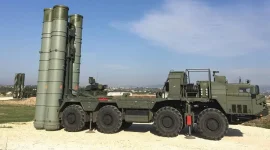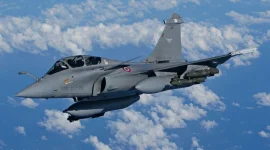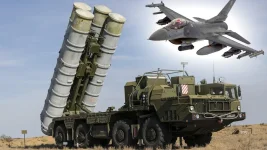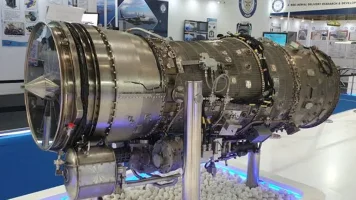- Views: 3K
- Replies: 5
India's indigenous military drone program is poised to take a significant leap forward, with the TAPAS BH-201 unmanned aerial vehicle (UAV) scheduled to conduct its first flight powered by a locally developed engine.
According to information shared with the Parliamentary Standing Committee on Defence, this crucial test is expected to take place in late September or October 2025.
The flight represents a major milestone in the nation's push for self-reliance in critical defence technology, a key goal of the 'Atmanirbhar Bharat' initiative.
The project is managed by the Aeronautical Development Establishment (ADE), a key laboratory under the Defence Research and Development Organisation (DRDO).
Strategic Surveillance Capabilities
The Tactical Airborne Platform for Aerial Surveillance-Beyond Horizon-201, or TAPAS BH-201, is a Medium Altitude Long Endurance (MALE) drone. It has been developed to serve the Intelligence, Surveillance, Target Acquisition, and Reconnaissance (ISTAR) needs of the Indian Army, Air Force, and Navy.Designed for persistent monitoring over vast areas without risking pilot lives, the TAPAS is engineered to operate for over 24 hours at altitudes reaching 30,000 feet.
The aircraft features a 20.6-meter wingspan and can carry a versatile payload of up to 350 kg, including advanced sensors and monitoring equipment.
Overcoming Hurdles with Indian Engineering
The development of the TAPAS has faced challenges, particularly in meeting the demanding performance targets for flight altitude and endurance set by the armed forces.Previous prototypes, which used engines sourced from foreign suppliers, demonstrated an endurance of 18 hours at 28,000 feet, falling slightly short of the final requirements.
To address this, the Vehicle Research and Development Establishment (VRDE), another DRDO lab, has successfully designed and built a 180-horsepower engine.
The upcoming flight will be the first time the TAPAS flies with this new indigenous powertrain, which is expected to enhance its performance and efficiency, finally enabling it to meet its operational goals.
This shift not only promises to boost the drone's capabilities but also reduces dependency on international supply chains.
A Versatile Platform for Modern Warfare
The TAPAS UAV is designed to be a highly adaptable asset. It can be equipped with a wide range of payloads, including high-resolution electro-optical cameras, synthetic aperture radar (SAR) for all-weather surveillance, and specialised equipment for electronic and communication intelligence gathering.Its operational reach is significantly extended by a satellite communication link that utilises India's GAGAN navigation system, allowing it to be controlled from a ground station over 1,000 km away.
This long-range capability makes it a vital tool for monitoring India's borders and for conducting maritime surveillance, with the Indian Navy reportedly planning to deploy it for missions in the strategic Andaman and Nicobar Islands region.
Final Steps Before Induction
The upcoming engine trial builds on a foundation of over 200 successful test flights. Key milestones already achieved include fully autonomous take-off and landing, and a successful demonstration of its capabilities to a joint team from all three military services in June 2023.Once the new engine is successfully validated, the TAPAS BH-201 will proceed to final user evaluation trials, the last step before being formally inducted into service.
The production of the UAV is expected to be handled by public sector defence firms Hindustan Aeronautics Limited (HAL) and Bharat Electronics Limited (BEL).






